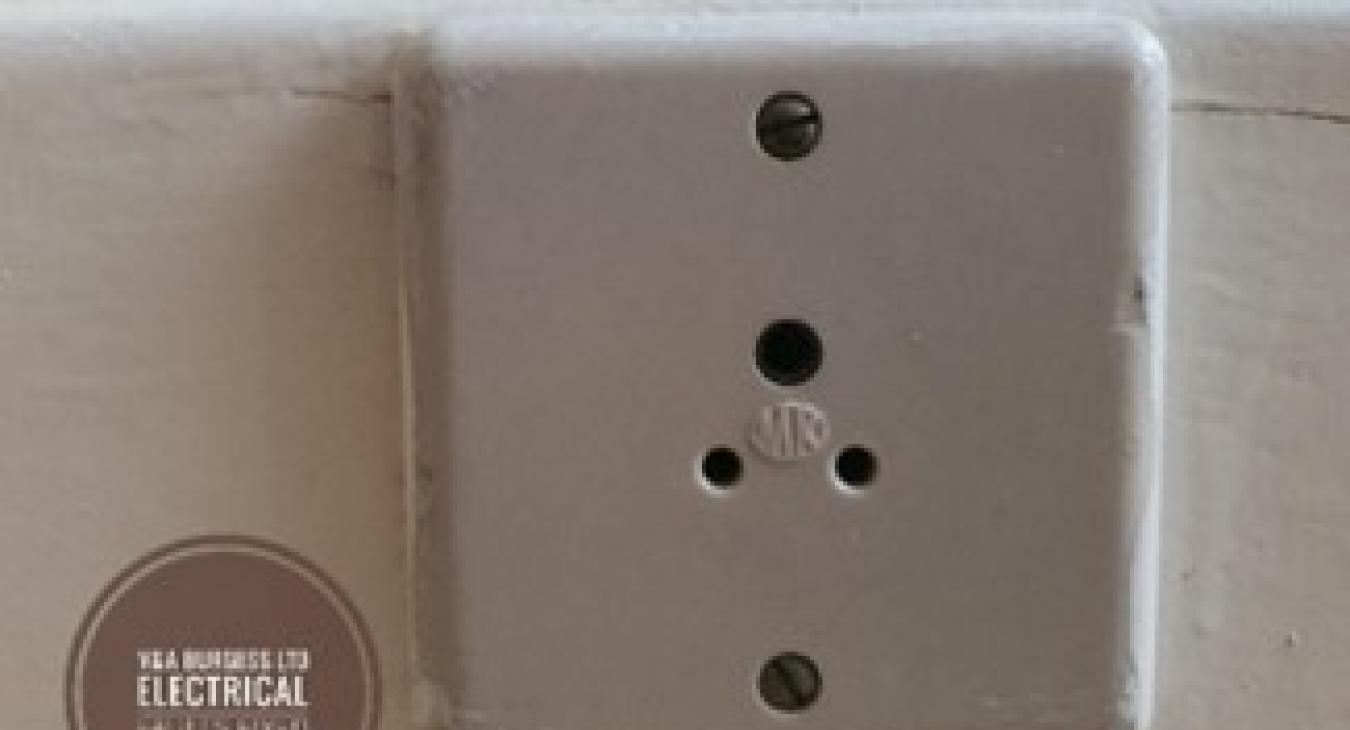
Table of Contents
Research available from the electrical safety body, the NICEIC, has found that the public are mostly unaware of the electrical dangers lurking in their homes. Householders that were questioned had electrical hazards in their homes including exposed bare wires, loose cables, old wiring and overloaded sockets.
The research also shows a considerable level of ignorance about the condition of home electrics. 40% of people had no idea about the age of the wiring within their home and 1 in 5 said their wiring was as much as 30 years old. More than half of those questioned did not know how often house wiring should be checked by a qualified electrician, despite faulty electrics being responsible for an average of 12,500 house fires, 750 serious injuries and 10 deaths each year. (source: www.niceic.com)
Back to top1) What types of Obvious Electrical Hazards are typical in homes?
There are many electrical hazards that can be on display and are yet unnoticed. We tend to live with things when they break for a while before fixing them or seeking a professional to repair them for us. When this happens, hazards can exist and become ignored as the hustle and bustle of everyday life takes over.
Here are some common hazards that can be on display and not even noticed on a daily basis:
- Trailing Cables
- Reliance on Extension Leads
- Loose Switches or Sockets
- Broken or Damaged Fuse Box
- Aging appliances
2) Trailing Cables
Trailing cables prevent a trip hazard to everyone in the home and also prevent a risk of electric shock. When we trip on a cable, there is a great strain places on the cable which can pull wires from their otherwise secure mounting points. Live cables can be pulled out of equipment or plug tops and create an electric shock risk.
Even the single-coloured insulation that we see over the copper wires can be an electric shock risk. If you see single colours of wiring outside an appliance, a plug top or other electrical equipment it should be repaired without delay. This single-coloured insulation is not resilient enough to withstand any further stress or mechanical damage and is fragile enough to break easily and show live parts.
Back to top3) Reliance on Extension Leads
Extension leads are only meant as a power supply to equipment on a temporary basis. As such, they should not be relied upon to provide permanent power solutions to electrical equipment. If your home does not have a sufficient number of socket outlets to provide power for all the equipment you wish to use then you should have an electrician install additional plug sockets for you.
Problems arise when not only do people use extensions leads but then add too many high-powered items to them. This can cause the extension lead to dangerously overheat and CATCH FIRE before the fuse ever blows! THAT’S RIGHT FOLKS, just because there is a fuse there does not mean it is foolproof.
As we can see from the photograph, two electric heating appliances proved FAR TOO MUCH for this socket extension device. This could have been avoided with the addition of some more plug sockets.
Back to top4) Loose Switches or Sockets
Loose switches or sockets can normally be fixed relatively simply by an electrician.
The danger of loose plug sockets and switches is that they can imminently fall off and expose live metal and wiring.
There can be a number of reasons for loose plug sockets and wall switches but an electrician should be able to find these issues and repair the problem. It may be that a new switch or wall socket is needed or perhaps the back box of the actual electrical accessory needs to be replaced in order to secure it correctly.
Back to top5) Broken or Damaged Fuse Box
A broken or damaged fuse box presents a danger of Electric Shock, Circuit Protection Failure, Overheating, Fire, and many others. We are all guilty of living with broken stuff for a while, the kitchen door that hangs off, the drawer that doesn’t shut properly and the curtains that only half close right?
Electrical systems DO NOT apply to these other situations. IF electrical equipment stops working, becomes loose or in any other way operates in some kind of deviation from NORMAL then it HAS to be fixed quickly. Once electrical systems begin to degrade, the costs and dangers can spiral so it’s VITAL that you have any issues with a Fuse Box or Consumer Unit fixed as quickly as possible.
Back to top6) Aging Appliances
Aging appliances can not only break down but can be the cause of house fires. According to UK government data* from 2022/2023 it appears that faulty appliances were the cause of 7051 house fires in the UK.
Appliances that are well out of warranty, in a poor state of repair or have lived a particularly hard life should be checked over regularly by an appliance engineer and retired when they are no longer safe to use. Nothing lasts forever and aging appliances can be a danger under the right circumstances.
Back to top7) What types of Electrical Hazards can be hidden from view?
Whilst some electrical hazards might be obvious, there are many that are not so glaring and even hidden from sight. Certain electrical issues may only be found with testing equipment by an electrician. Common examples are:
- Breaks in Circuits
- Earthing Problems
- Loose Connections
- Cable Damage
- Hidden Electrical Connections
7.1) Breaks in Circuits
When there are breaks on electrical circuits, the sockets, lights, and cooker may not work properly and there may be some symptoms. All too often, there are no symptoms and circuit breaks can prove to be deadly in the event of a secondary electrical fault in the home. Only an electrician can check for and locate breaks in an electrical circuit and fix them.
Breaks in circuits can also lead to overheating and fire and there can be no prior symptoms. These kind of hazards would likely only be picked up on an electrical inspectionby an electrician. If you have not had an electrical inspection carried out in the last 10 years then it is strongly recommended that you do so.
7.2) Earthing Problems
Earthing problems often show themselves via little shocks you may receive from various metalwork around the home. Sometimes, earthing problems will not show themselves at all until there is a secondary electrical fault that requires the earth to be correct and continuous.
The only true way to know if the earthing is correct and safe is to ask an electrician to come and carry out inspection and testing on your homes electrical system to ascertain the condition and suitability for continued use.
7.3) Loose Connections
Loose connections will often show various symptoms. These could include things like intermittent power cuts to the electrical system, sockets that occasionally work and then don’t. Crackling or popping noises from electrical equipment, flickering lights, and overheating of various electrical accessories or the trip switch box.
Loose connections are something that an electrician may be able to identify through testing but ideally if the electrical installation is very old then all consumer unit connections should be checked and as many plug socket and wall switches as possible too.
Main electrical inspections do not include the removal of all plug sockets and wall switches so if this is something that you want done then you will need to ask your electricians for this service.
7.4) Cable Damage
Cable damage is commonly hidden from view as are the majority of cables in an electrical system. Cables can be buried in walls, floors, ceilings, basements, and attic spaces. Rodents are a common cause of cable damage and enjoy nibbling on the sheath of cables thereby destroying the wiring and causing the consumer unit to trip as newly developed faults appear.
Cable damage can also occur through many DIY activities such as drilling into walls and other surfaces. Boarding a loft is a common cause of crushed cables as they are stood on, boarded over and possibly even nailed through during the process of loft boarding.
7.5) Hidden Electrical Connections
Electrical connections should generally be accessible for maintenance and inspection unless the connection and junction that is formed is considered to be Maintenance Free. A Maintenance Free Connection is a wiring junction that requires no interference, maintenance, tightening or access for the life of the connections.
The vast majority of cable junctions currently in our homes are NOT maintenance free connections and as such, should remain accessible.
The photograph shows a disgraceful attempt at a cable junction in a wall that caused MAYHEM with the plug sockets in the property. This is NOT the way to create a maintenance free junction. This required a hammer to bash away the cement and plaster covering to find this “junction”.
Back to top8) How to Check for Electrical Hazards in the Home
Your electrical system ages and degrades over time and with use, you have an MOT yearly for your car, an occasional medical check-up for yourself and yet you will live in a building surrounded by an electrical installation that could potentially be a death trap. A simple Electrical Inspection carried out by a qualified electrician can easily put your mind to rest.
There are two forms of testing that can be carried out and each have their own benefits and merits:
A Visual Inspection - A brief look at the main components of your installation, with the electrician providing his/her professional opinion. This would be accompanied with a one or two-page report. This style of inspection really limits the information that can be obtained from thorough testing but is possible more appropriate for very old wiring systems where visual confirmation of age is needed when deciding on a possible rewire of the installation.
A Full Periodic Inspection (in service inspection and test) - A comprehensive inspection and testing of your installation, cables will be tested to see if they have degraded since being installed, a full report approximately five to six pages often including photographs should be provided. This can also be known as an Electrical Safety Report, Electrical Installation Condition Report (EICR) or an Electrical Safety Check.
Back to top











